Abstract
Gangrenous bowel most often results from hernia, adhesions and mesenteric insufficiency. The overall mortality rate for 151 cases was 37%. This figure was 20% for hernia, 23% for adhesions and 74% for mesenteric insufficiency. In the latter category where bowel resection was feasable the mortality rate was 40%. Other causes of bowel gangrene had a mortality rate of 28%. In many instances the pathophysiologic processes were of such a nature that current medical expertise has not reached a level of development to effectively cope with the situation. There were, however, a significant number of cases where survival may have been achieved had it not been for deficiences on the part of the patient, the primary health care personnel or those in attendence at the referral center. The basic keystone for a successful outcome in the management of patients with the gangrenous bowel problem is early surgical intervention. All will be lost if patient exposure to this source of lethal toxins is allowed to proceed to an irreversible stage. Liberal antibiotic administration probably postpones the arrival of intractable hypotension. Other factors which can be expected to improve the survival rate include minimization of technical errors, repair of incidental hernias, elemination of dependence upon nasogastric tubes for the definitive management of patients with complete bowel obstruction (with one or two exceptions), and a firm commitment to the diligent pursuit and early definitive management of postoperative complications.
Full text
PDF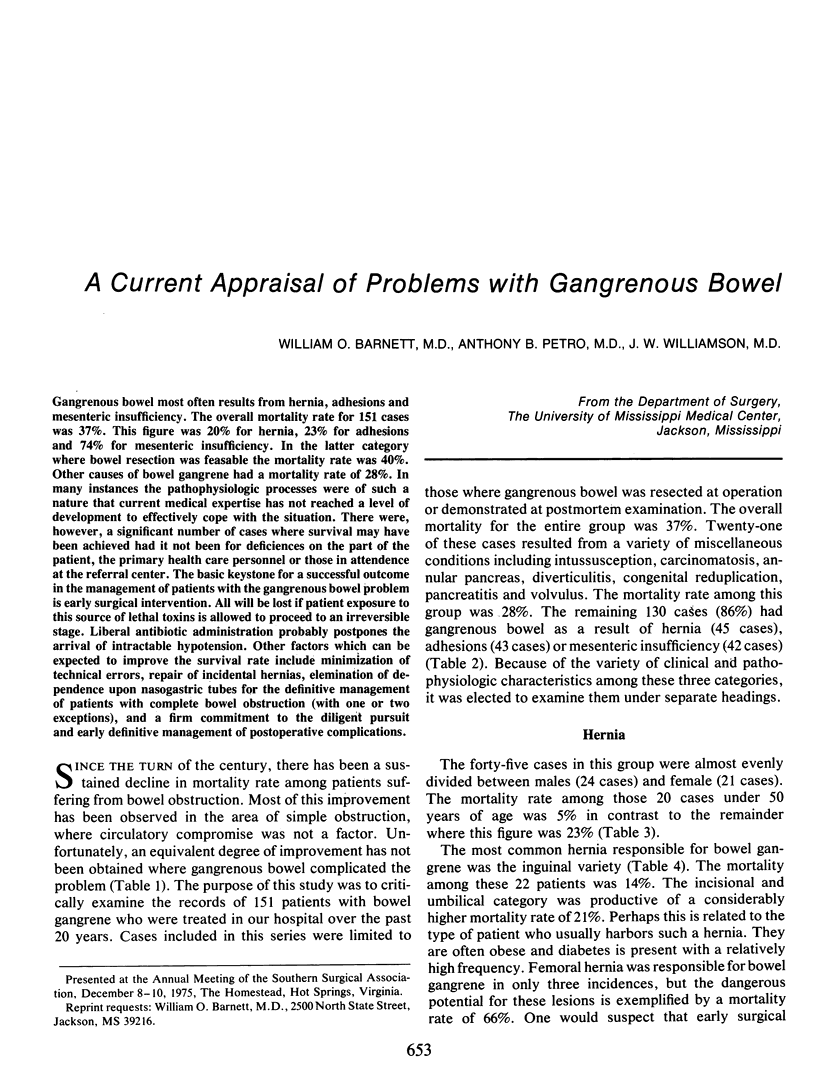
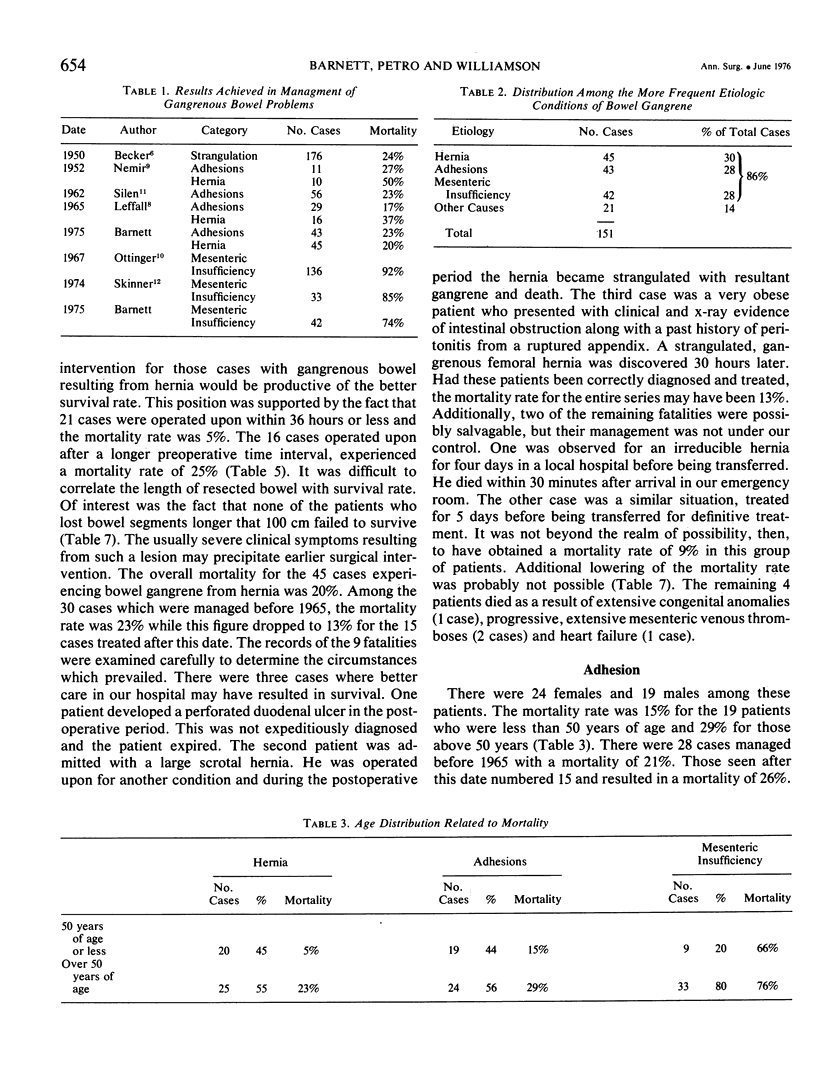
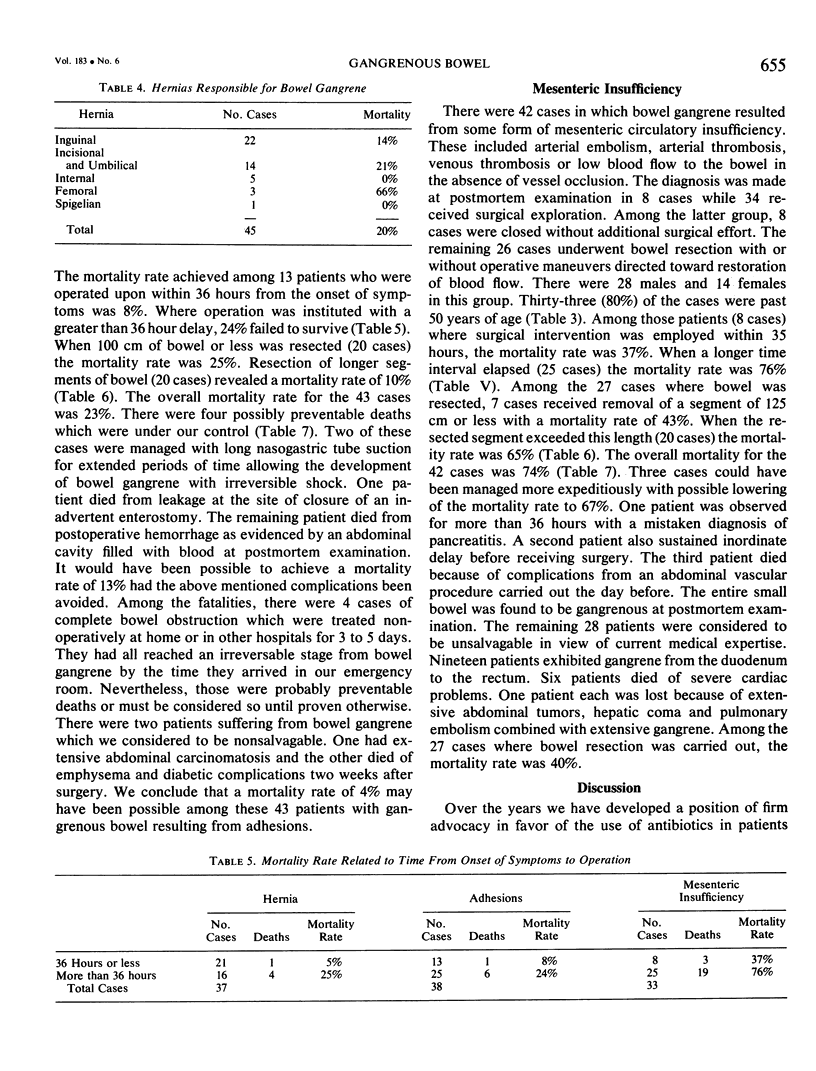
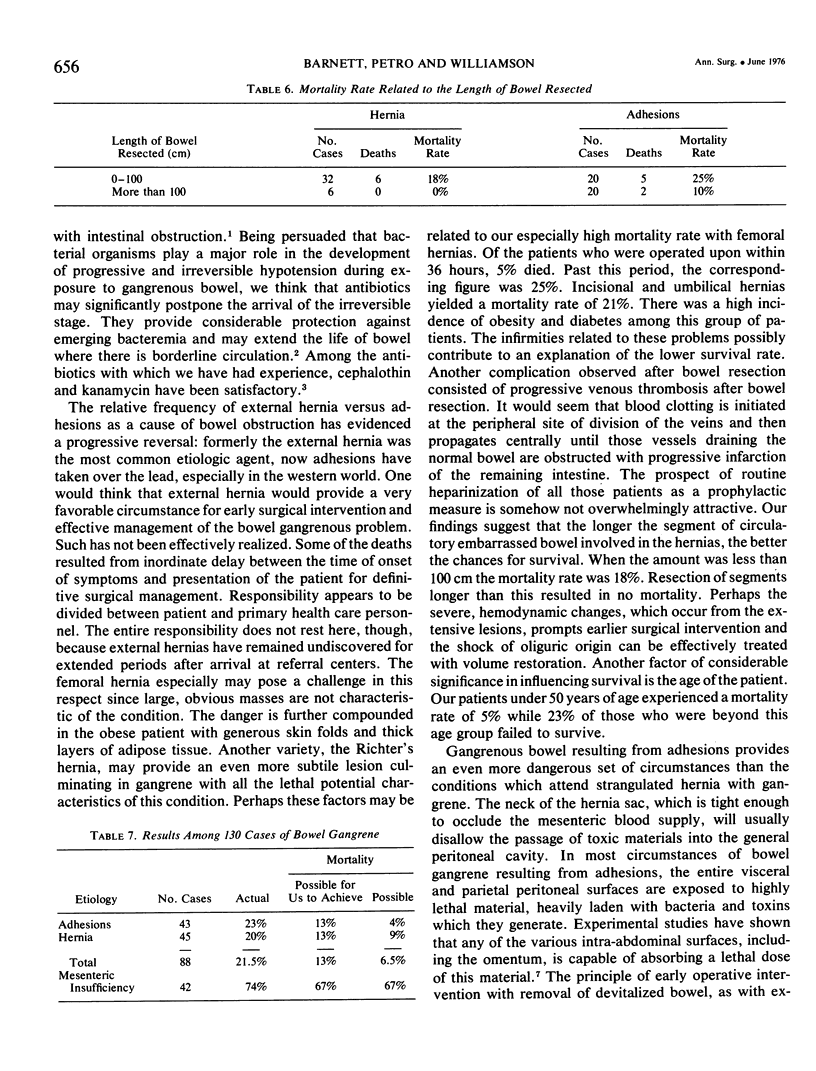
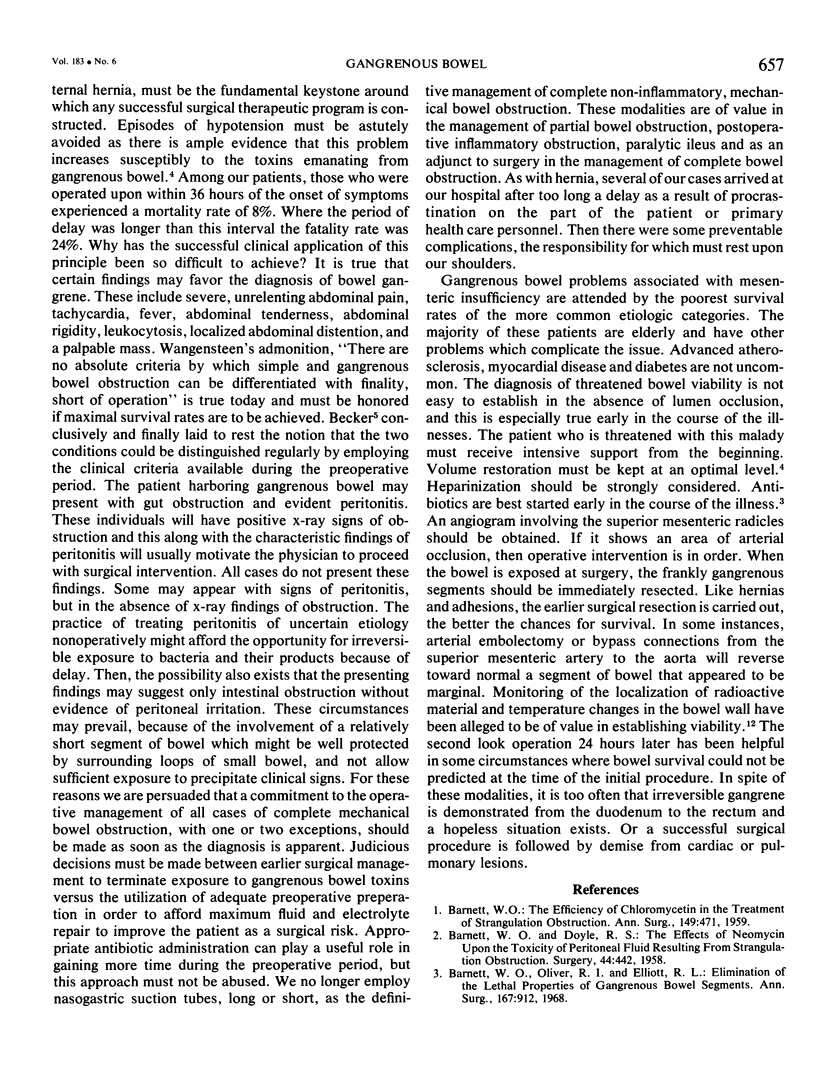
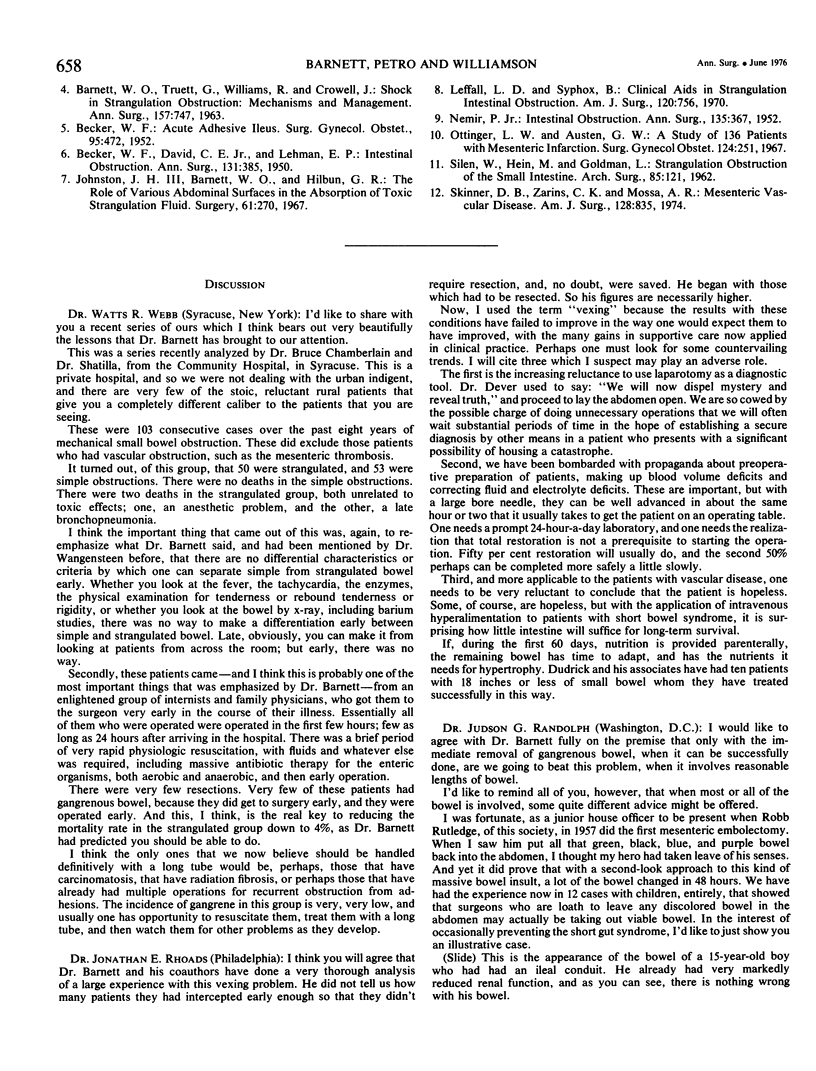
Selected References
These references are in PubMed. This may not be the complete list of references from this article.
- BARNETT W. O., DOYLE R. S. The effects of neomycin upon the toxicity of peritoneal fluid resulting from strangulation obstruction. Surgery. 1958 Sep;44(3):442–446. [PubMed] [Google Scholar]
- BARNETT W. O., TRUETT G., WILLIAMS R., CROWELL J. Shock in strangulation obstruction: mechanisms and management. Ann Surg. 1963 May;157:747–758. doi: 10.1097/00000658-196305000-00009. [DOI] [PMC free article] [PubMed] [Google Scholar]
- BARNETT W. O. The efficacy of chloromycetin in the treatment of strangulation obstruction. Ann Surg. 1959 Apr;149(4):471–474. doi: 10.1097/00000658-195904000-00003. [DOI] [PMC free article] [PubMed] [Google Scholar]
- BECKER W. F. Acute adhesive ileus; a study of 412 cases with particular reference to the abuse of tube decompression in treatment. Surg Gynecol Obstet. 1952 Oct;95(4):472–476. [PubMed] [Google Scholar]
- BECKER W. F., DAVIS C. E., Jr, LEHMAN E. P. Intestinal obstruction. Ann Surg. 1950 Mar;131(3):385–391. doi: 10.1097/00000658-195003000-00009. [DOI] [PMC free article] [PubMed] [Google Scholar]
- Barnett W. O., Oliver R. I., Elliott R. L. Elimination of the lethal properties of gangrenous bowel segments. Ann Surg. 1968 Jun;167(6):912–919. doi: 10.1097/00000658-196806000-00012. [DOI] [PMC free article] [PubMed] [Google Scholar]
- Johnston J. H., 3rd, Barnett W. O., Hilbun G. R. The role of various abdominal surfaces in the absorption of toxic strangulation fluid. Surgery. 1967 Feb;61(2):270–273. [PubMed] [Google Scholar]
- Leffall L. D., Syphax B. Clinical aids in strangulation intestinal obstruction. Am J Surg. 1970 Dec;120(6):756–759. doi: 10.1016/s0002-9610(70)80043-5. [DOI] [PubMed] [Google Scholar]
- NEMIR P., Jr Intestinal obstruction; ten-year statistical survey at the Hospital of the University of Pennsylvania. Ann Surg. 1952 Mar;135(3):367–375. doi: 10.1097/00000658-195203000-00009. [DOI] [PMC free article] [PubMed] [Google Scholar]
- Ottinger L. W., Austen W. G. A study of 136 patients with mesenteric infarction. Surg Gynecol Obstet. 1967 Feb;124(2):251–261. [PubMed] [Google Scholar]
- SILEN W., HEIN M. F., GOLDMAN L. Strangulation obstruction of the small intestine. Arch Surg. 1962 Jul;85:121–129. doi: 10.1001/archsurg.1962.01310010125017. [DOI] [PubMed] [Google Scholar]
- Skinner D. B., Zarins C. K., Moossa A. R. Mesenteric vascular disease. Am J Surg. 1974 Dec;128(6):835–839. doi: 10.1016/0002-9610(74)90081-6. [DOI] [PubMed] [Google Scholar]


